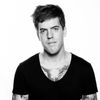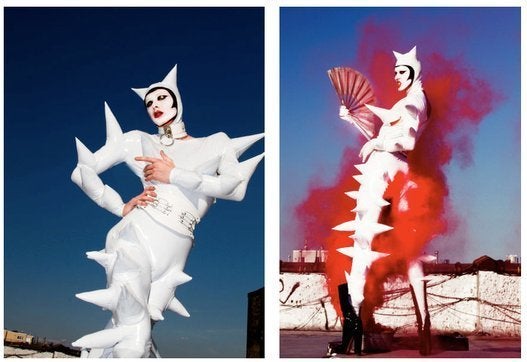This is the tenth installment in a series titled "FABRICATIONS" that elevates the work of up-and-coming queer individuals working in the fashion world. Check back at HuffPost Gay Voices regularly to learn more about some of the designers of tomorrow and the way their work in fashion intersects with their queer identity.
Claire Fleury is a queer fashion designer and artist living in and working out of New York City. Her designs are heavily informed by her background in theatre and performance, as well as her time growing up in Amsterdam throughout the '80s and '90s. Fleury previously operated Strange Loop Gallery with photographer Alesia Exum, leading her to forge relationships with NYC's up-and-coming queer artist and performance community -- many of whom wear her designs today. Read the interview below to learn more.
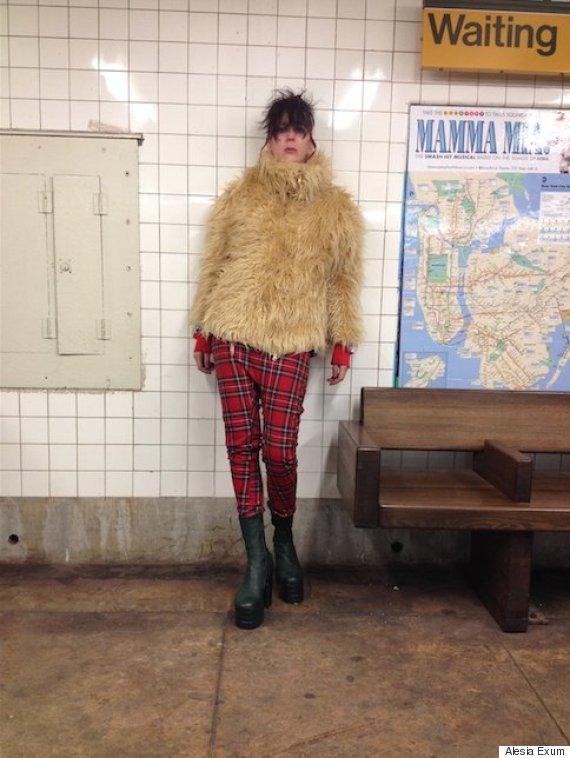
The Huffington Post: What has your journey as a queer artist and fashion designer entailed?
Claire Fleury: Before starting to make clothes, I was a full-time dancer, actress and theater director/writer back in Amsterdam where I am from. Coming to New York City in December 2011, I decided I wanted to do something different and opened an art gallery with my partner and love Alesia Exum: Strange Loop Gallery. We existed on the Lower East Side for two-and-a-half years, showing predominantly queer artists in themed group shows.
It all started when Alesia Exum and I went to an opening across the street and saw all these colorfully dressed people. We said to ourselves, "Who are these people? We want them at our gallery!" We organized an exhibition where we asked [New York performer] Shane Shane to give us the phone numbers of 12 nightlife personalities he knew, buying them disposable cameras and documenting themselves and their friends dressing up -- that became the exhibition. It was called "Electric Eclectic Beauties of the Glorious Nightlife." We had photos by Krys Fox, Hari Nef, Trey LaTrash and Leo Gugu, among others. We were crying with joy when, on opening night, the stunning Jordan Fox and Severely Mame walked in, and all those other beautifully dressed up people. That was also the first time we met [designer] Domonique Echeverria -- and it was instant magic.
We showed work by Ryan Burke, Shane Shane, Brett Lindell, Alice O’Malley, Katrina del Mar, Domonique Echeverria, Gerry Visco, Diego Montoya, Tyler Ashley, Martyn Thompson, Gage of the Boone, Berlin-based Goodyn Greene, Miriam Castillo, Purevile, Timothy Atticus and others. We also hosted performances by BodyH1gh, Brett Bailey, Kris Grey, Cupid Ojala, Sarah Jimenez, and Jessica Posner, and Chris Riffle.
I am super grateful for those gallery years. Alesia calls it "A two-and-a-half year durational performance," and that is what it felt like. We met so many wonderful people, many of whom where my first clients for the clothing and costumes I started making. The reason we closed the gallery was because we both wanted to focus on making our own art. Alesia is a professional photographer, and I had started experimenting with making clothes.
I have no formal education in fashion or costume design: I learned how to sew from sitting on my mom’s worktable when I was between the ages of 4-12. She made style costumes for theatre and provided a generous appreciation of all art forms from an early age. Everyone around me growing up was an artist, so it seemed logical I became one too. After the performing arts I ventured into costume and fashion design. Somehow I did not start making clothes from scratch until after my mom passed, about two and a half years ago. Maybe I was afraid of her perfectionist eye? Who knows! Now it is my way of having her with me all the time. When I am not sure how to make something, I say: "Mom, show me!" And she points me to Google…
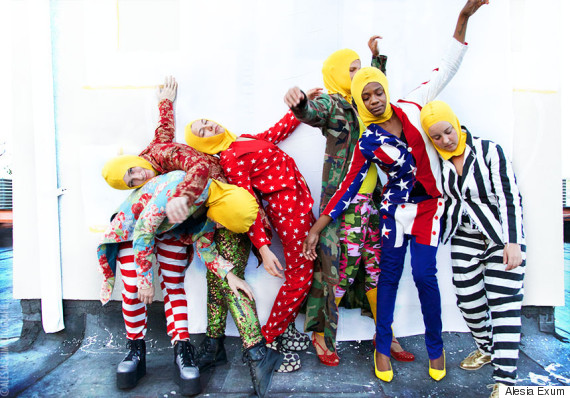
You describe your designs as "performative collaborations." What do you mean by this?
With a history in theater for nearly two decades, I almost feel like I stepped off stage and made room for these garments to take over. They are my script, my choreography, ready and needing to be embodied and performed by someone else.
When working with Alesia Exum on photo shoots, the performers are interpreting my clothes in a way that I can’t plan ahead. They bring in their personality -- more than maybe a model from an agency would -- because that is not what is usually required of them. Our performers often do their own make up and sometimes I let them pick the combinations too.
I also see my work as a part of a performance because the clothes themselves have "zero hanger appeal," as my friend Dust Tea Shoulders would say. They come alive and transform with whomever wears them. Like a song needs to be sung, a text needs to be spoken: my clothes need to be performed! This does not mean they are only for on stage. I like to refer to my style as "Glam de Jour" or "Day Glam," so they are definitely suitable for wearing to the grocery store.
The philosophy? Look as glamorous as you can in daily life without falling over and breaking your ankles!
I still get very excited when people come to one of my pop up events or to my studio to try things on: The same garment can transform when worn by different people. I make my clothing gender and age irrelevant -- anybody can wear them. There is definitely a dialogue going on, an interpretation. I know that can be said for all clothing, but I want to emphasize that aspect.
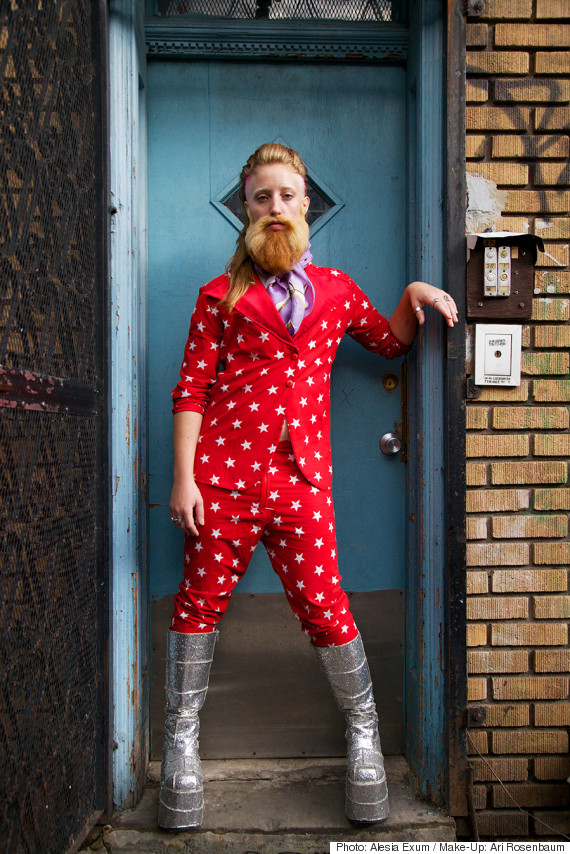
What does it mean to you to be a queer designer? How does your queer identity intersect with your work?
As someone who does not feel limited to one gender role, I make my clothes and costumes gender-fluid as well. Any one garment is never specifically made to be worn by anyone male or female.
Influenced by the glam rock period, where men wore platform shoes and the man-dress was a thing, I look for similar roads when it comes to male-identified clothing, like workman’s clothes or suits. I take these and change perhaps the fabric, exaggerate some section, add a colored stitching, or intervene in some other sort of way. All of the results, from every road I travel, are an invitation to fill in your own interpretation of whatever gender it is you want to be that day.
Even though the arts might seem like the most accepting field for queer people, let alone in Amsterdam, I was still not always comfortable being "out." I basically hovered between two worlds: my queer nightlife and my straight dance/art world. I felt being gay was a private thing and did not attempt to make performances about being gay. I did, however, put queer themes, or same-sex relationships in my pieces, without emphasizing them or portraying them as anything out of the ordinary. I guess it was my way of saying, "It’s ok to be gay, now leave me alone." That is kind of how I've lived too: I am gay, so what. I know we have to march and teach and preach in order for us to become more and more accepted but, hey, sometimes I just want to not have to be an activist, not have to be labeled as "queer artist" or "woman artist" but just "artist." "Tall artist," if you must.
This always felt and feels different when I am in the United States. I first lived here for a minute in the '90s and that was the first time I found there are people who are both artists and queer. I discovered the importance of "being out" -- if only to show the rest of the world that, yes, we are here and, yes, we are queer! Coming from a family in which there is no other gay person in sight -- no matter how far back or sideways you look -- I always felt like a lonely goat on top of a mountain, scraping my voice while saying, "Hey, here I am. Different but equal, right? Right?"
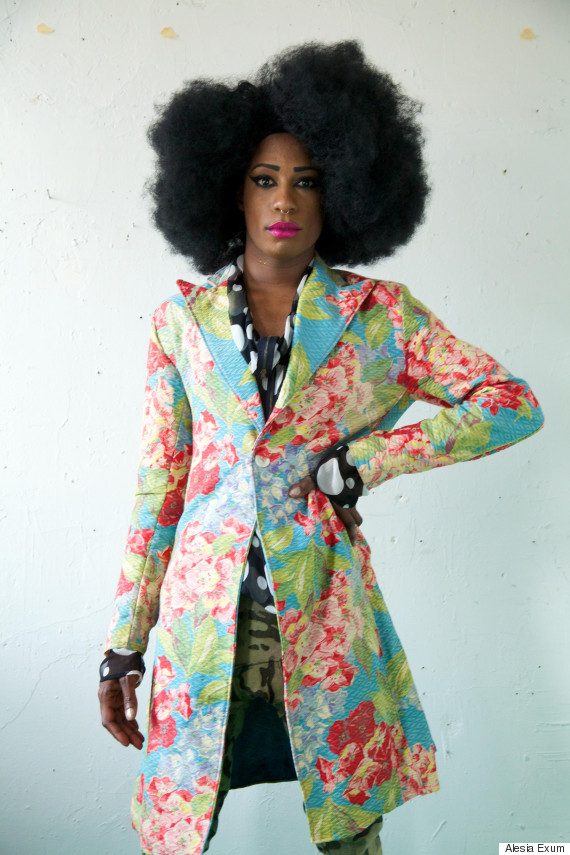
How did growing up in Amsterdam in the 1980s and 1990s -- as well as your experiences traveling abroad -- influence your work today?
Growing up as a young punk in Amsterdam, I was not allowed on public transport just because I was wearing neon-colored mini skirts and fishnet stockings with holes in them, beat up pumps and a used toothbrush in my oversized men’s jacket. Later I moved on to wearing combat boots, boy briefs and studded jackets, which were not at all things that were worn in mainstream fashion at that time. Still no bus for me.
Hitchhiking to Berlin and Paris, or staying in squats in London in the '90s, I was exposed to so many great periods in fashion: punk, new wave, new romantic, Gaultier, Westwood, glam rock and all the colorful people that made their unique mix of renaissance, early 1900s attire, some with colonial references or a touch of military in their garments. I am still inspired by some of the fashion I saw back then.
Often when people see my clothes on a rack they think at first glance that it is vintage: because of the multitude of colors and patterns and the fact that there is only one, maybe two of any one garment. We are now used to all clothes looking more or less the same and being displayed and available in mass-produced quantities. Stores like H&M and Forever 21 -- those were not there when I grew up and when I looked at some footage of people in the streets of Amsterdam in the '80s the other day, the first thing that struck me is that nobody dressed alike; everybody had their own personal style.
I feel inspired by a lot of time periods and really see no restrictions in what can or cannot be combined, from all the things I see and have seen. My fashion is a kaleidoscopic mix of looking at art, at life, at fashion, at people in the streets. It feels free and exciting, a whole world full of inspiration.
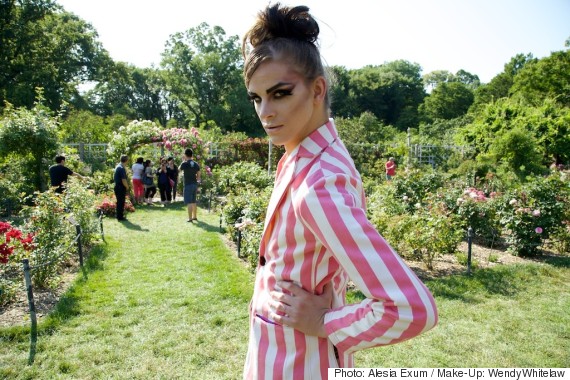
You use a lot of prominent people involved in New York City nightlife to model your clothing. Why have you chosen to utilize and give visibility to this community?
Alesia initiated this idea because she wanted to photograph these people, a lot of whom are our friends now too -- and she wanted to shoot my fashion. It is, in a way, an extension of our work as curators at Strange Loop Gallery: we work with emerging artists, hoping to contribute to everyone’s art and exposure. We hope that those photo shoots bring out something unexpected and desirable for them too.
I always like to work with friends, or at least people that are in the same community. I feel more open that way. I am so terribly grateful for the beauty and talents of Severely Mame, Macy Rodman, Leo Gugu, Grayson Squire and Image Object who modeled in our photo shoots, and Tyler Ashley who choreographed a guerrilla fashion performance for fashion week last September, and all the people who performed in that. Rify Royalty, who has been performing in custom designs by me, Shane Shane, who commissioned me to make him a sheer silver netting bodysuit -- which he has worn on stage, at home, in bed and even on a camping trip. Mey Be and Wendy Whitelaw, who did make up for several shoots, and Walt Cessna for promoting the hell out of me and shooting so many of my clothes on so many pretty boys.
In general, the support of this community has been amazing. I was even nominated for best fashion designer at the Brooklyn Nightlife Awards -- I had no idea! But this is all about what these people have done for me. I am hoping that I have done something for them too -- some of them still have not picked out that garment I promised them! I hope that our photo series will be more than a fashion shoot for my clothes; to me they are art works because they are shot by a brilliant photographer, Alesia Exum, and because they are all one of a kind amazing talented performers.
At HuffPost we've seen an emergence of clothing lines that cater to queer and trans bodies whose needs aren't met by traditional designers. Do you think we'll see more of this in the future? What does this say about the future of fashion?
I hope so. I think designers like TillyandWilliam and BCALLA are amazing in the way their designs are truly new inventions -- for a new world of gender-crossing and gender-fluid individuals. I would think fashion is a field where this would reflect –- not just as a trend, but also as a general direction. I think many people have become tired of the roles we have been supposed to play, as any gender. There is a lot going on [in fashion] in terms of transgender models who are being very successful, female models showing men's lines, older models being introduced into campaigns. Hopefully this is something that continues to develop to include anyone who wants to dress up to feel like they can and they are accepted, whatever body type, gender or age they have.
What does the future hold for Claire Fleury?
I am getting a lot of requests in for performance attire, and that really excites me! I will be making costumes for Yackez’s performance in July for Dixon Place, which I think entails dressing a background dance troupe of seniors, trained by Larissa Velez-Jackson.
In June there will be an exhibition of Alesia’s photos and my designs at the Bureau of General Services Queer Division, containing many of the photos we shot last year.
I hope to be doing lots of custom designs, for performers and non-performers, and I love hosting performance parties like the ones we did at Strange Loop Gallery and recently at Vitrina NYC called "Pop Friday." It turned out a wonderful event with Shane Shane performing, as well as Yackez and Tyler Ashley with Rakia Seaborn and Image Object, and Dust Tea Shoulders interviewing his guests that he brought for a live "Fashion TV" session.
Definitely more of that.
Want to see more from Claire Fleury? Head here to check out the designer's website. Missed the previous installments in this series? Check out the slideshow below.
